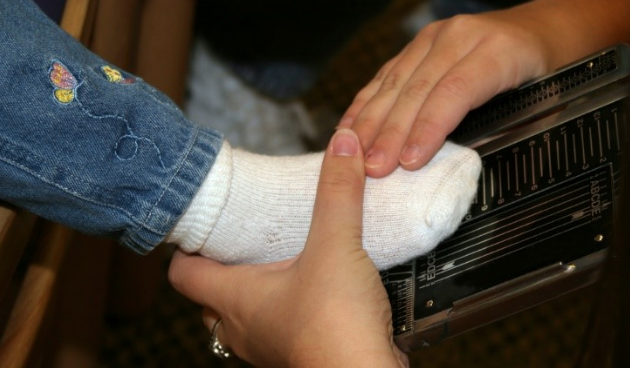Once you have a toddler in your household who is beginning to walk, it’s important to find them the best shoes to help support their footsteps and set them on the right road for health and strength and good posture — as well as protect them, of course, from sharp objects and heat on the ground they walk on.

However, selecting the best footwear for young children is often not an easy task. While there are options galore, you need to be sure what you purchase is designed properly for small developing bodies. Read on for some buying tips you can follow today.
Flexibility
One of the most important elements of a good shoe for young children is finding something that offers flexibility. You should be able to bend the soles, since shoes that are too stiff and unyielding could actually impede the foot development of your child (because the muscles in the feet won’t be able to do the work they need to). Kids’ feet are still growing and are more susceptible to damage than adult feet.
Also, note that shoes that don’t have any “give” in the sole and are completely rigid will typically restrict the movement of the child’s forefoot. This can hamper a kid’s ability to run, play, skip, climb and otherwise move about freely. Including an insole in the shoe is also a good idea to support movement and protect the ankles: see The Good Feet Store Reviews for some options.
Breathability
Breathability is another thing to look for in all the shoes you buy for your young one. It’s necessary to choose products made from natural, lightweight and breathable materials that are porous and allow air to circulate in and out. Children’s feet perspire quite heavily, so you need to cater to this.
Look for options manufactured from cloth, leather or canvas, or newer mesh materials, as opposed to hot heavy plastic or rubber. Also, ensure you find shoes with an insole made of absorbent material.
Stability Over Fashion
Many parents (and other shoe buyers, particularly those buying gifts for kids) tend to go wrong in the footwear department because they concentrate on what looks cute, fashionable and made according to trends rather than focusing on stability. While there are many adorable children’s shoe designs out there, such as those modeled after adults shoes (think Crocs, cowboy boots, Converse or flip flops), these choices aren’t usually good for young children who are still learning to walk and getting stronger on their feet.
Instead, look for stability. The soles of shoes should have grip and not be smooth. Footwear with nonskid rubber soles with ridges are an effective option. This will help to make tots less likely to slip and slide as they move about.
On the other hand, you also need to avoid soles with deep grooves in them. These grooves can catch on the edge of sidewalks, rugs or other surfaces and trip up little children. You should also steer clear of any type of slip-on or backless shoes, as these don’t give kids enough support or stability.
Correct Fit

Of course, as you would imagine, getting the correct fit for the shoes you get for your child is imperative. You must learn how to measure shoe size properly, so your little one is never moving about in too-small or too-large footwear.
There are numerous things to consider when measuring your child for shoes. For example, make sure they are standing up, and check their toes to ensure they’re not curling them under, as this would obviously make a significant difference to the measurements taken. Put your child in socks before trying on shoes, too, and make sure these are the thickness they’ll likely have on when wearing the pair.
Another tip is to use your thumb to see if there’s enough room between your child’s big toe and the inside of the front of the shoe. About a thumb’s width (roughly half an inch) is best. Watch your toddler walk in the shoes to see if the footwear looks too loose or too tight. You might notice that a shoe slips up and down, for instance, or impedes their gait.
While it might be tempting to buy shoes a little larger than required so your child will get some more wear out of the footwear, don’t go down this path. Shoes too big for children can be unsafe. If shoes seem to fit your toddler well, buy them in that exact size and let them enjoy the wear they get out of the pair.
















Add Your Comment